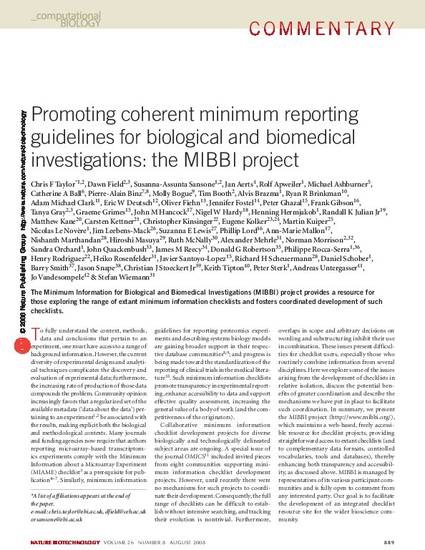
To fully understand the context, methods, data and conclusions that pertain to an experiment, one must have access to a range of background information. However, the current diversity of experimental designs and analytical techniques complicates the discovery and evaluation of experimental data; furthermore, the increasing rate of production of those data compounds the problem. Community opinion increasingly favors that a regularized set of the available metadata ('data about the data') pertaining to an experiment1, 2 be associated with the results, making explicit both the biological and methodological contexts. Many journals and funding agencies now require that authors reporting microarray-based transcriptomics experiments comply with the Minimum Information about a Microarray Experiment (MIAME) checklist3 as a prerequisite for publication4, 5, 6, 7. Similarly, minimum information guidelines for reporting proteomics experiments and describing systems biology models are gaining broader support in their respective database communities8, 9; and progress is being made toward the standardization of the reporting of clinical trials in the medical literature10. Such minimum information checklists promote transparency in experimental reporting, enhance accessibility to data and support effective quality assessment, increasing the general value of a body of work (and the competitiveness of the originators).
Available at: http://works.bepress.com/james_reecy/56/

This article is from Nature Biotechnology 26 (2008): 889, doi:10.1038/nbt.1411.